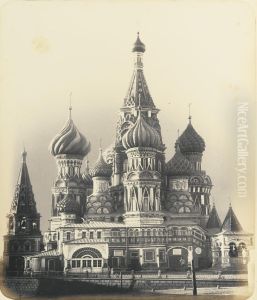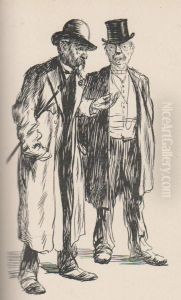E. Huard Paintings
Émile Huard, often known as E. Huard, was a French artist born in 1847 in the city of Rennes, France. Although not as widely recognized as some of his contemporaries, Huard contributed to the art scene during a period of significant change and development in European art, coinciding with movements such as Impressionism and Post-Impressionism.
Huard's early life and education in the arts remain somewhat obscure, but it is known that he developed his skills during the latter half of the 19th century, a time when Paris was the epicenter of the art world. He likely received a traditional art education, which would have included rigorous training in drawing and painting, and an immersion in the study of the works of Old Masters.
Throughout his career, Huard demonstrated a proficiency in genres that were popular among the French bourgeoisie, such as landscapes, portraits, and still lifes. His style, while perhaps not radical, would have been influenced by the prevailing artistic trends of his time, as well as by the works of more avant-garde artists.
Despite the lack of extensive records on Huard's exhibitions and sales, it is clear that he was an active participant in the artistic community. He may have exhibited his works in salons and galleries, which were the primary venues for artists to gain recognition and sell their works during that era.
E. Huard passed away in 1929, leaving behind a body of work that, while it may not have shifted the course of art history, reflects the skills and aesthetic values of a competent 19th-century French artist. His paintings today can be of interest to historians and collectors who focus on this period and provide a window into the tastes and sensibilities of his time.

